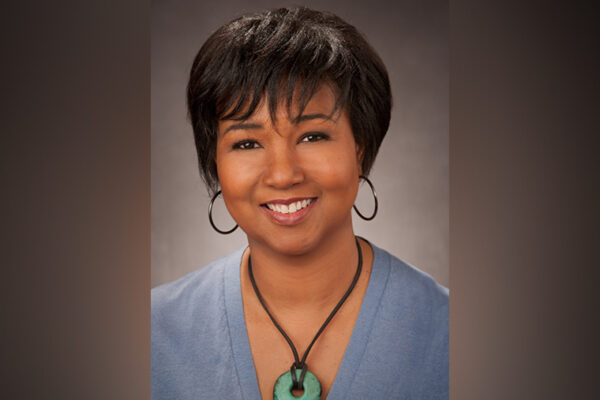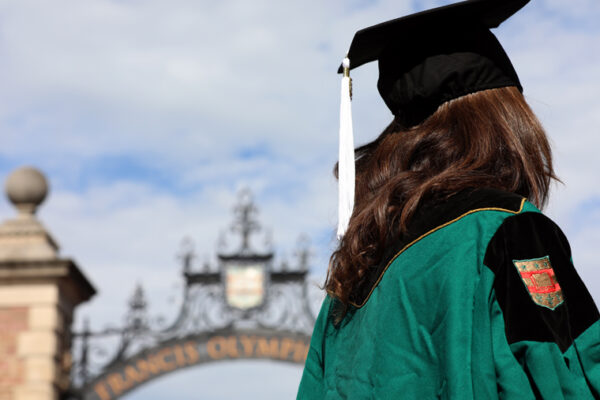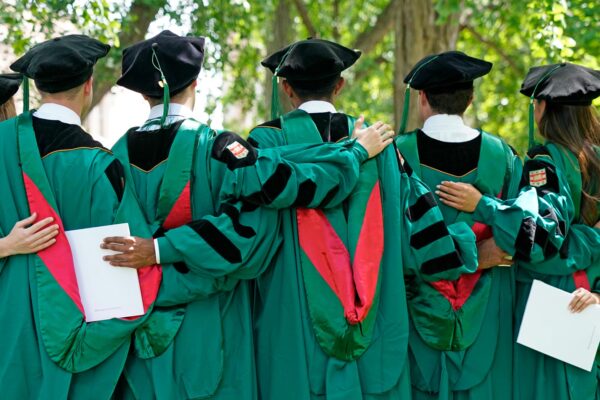Washington University in St. Louis will award five honorary degrees during its 161st Commencement May 20.
During the ceremony, which will begin at 9 a.m. on Francis Olympic Field, the university also will bestow academic degrees on approximately 3,800 members of the Class of 2022.
Mae Jemison, MD, the first woman of color to become a NASA astronaut and to travel into space, founder of two companies and creator of an international science camp to increase science literacy, will deliver the Commencement address and receive an honorary doctor of science degree.
The other honorary degree recipients and their degrees are:
- Brian K. Kobilka, MD, the Hélène Irwin Fagan Chair in Cardiology and a professor in the Department of Molecular and Cellular Physiology at Stanford University School of Medicine and Nobel Prize winner, doctor of science;
- Sonia Sotomayor, the first Latina justice and the third woman to serve on the U.S. Supreme Court, doctor of laws;
- Andrew C. (Andy) Taylor, executive chairman of Enterprise Holdings Inc., a life trustee and dedicated benefactor at Washington University and a noted civic leader and philanthropist, doctor of humanities; and
- Barbara Broadhurst Taylor, a longtime supporter of St. Louis’ civic and cultural organizations and advocate for the region’s progress, doctor of humanities.
Sotomayor will not be on campus for the Commencement ceremony. A recording of the justice being presented her honorary degree while she visited the university last month will be shown during the ceremony. She spoke before a crowd of more than 3,000 students, faculty and staff during a question-and-answer session April 5 in the Field House.
Honorary degree recipients
At age 16, Jemison entered Stanford University, where she earned a bachelor of science degree in chemical engineering and fulfilled the requirements for a bachelor of arts in African and Afro-American studies in 1977.
She then attended medical school at Cornell University and earned a doctor of medicine degree in 1981. During medical school, she volunteered in Kenya and at a Cambodian refugee camp in Thailand. After completing a medical internship, she volunteered with the Peace Corps as a medical officer in Liberia and Sierra Leone from 1983 until 1985 before working as a general practice physician in Los Angeles.
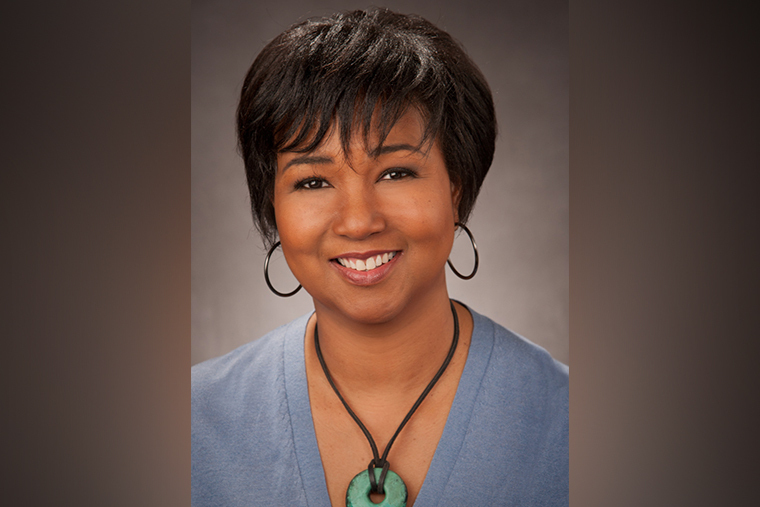
Pursuing a dream since childhood, she applied for and was admitted into NASA’s astronaut training program in 1987, eventually becoming the first woman of color astronaut.
She was a science mission specialist for NASA’s space shuttle Endeavour, STS-47 Spacelab, in September 1992. During the eight-day flight that orbited the Earth 127 times, she performed experiments in material science, life sciences and human adaptation to weightlessness and was a co-investigator on a bone cell research experiment.
After leaving NASA in 1993, she started the Jemison Group Inc., a technology consulting firm integrating critical socio-cultural issues into the design of engineering and science projects.
Jemison now leads 100 Year Starship (100YSS), a bold, far-reaching nonprofit initiative to assure the capabilities exist for human travel to another star within the next 100 years.
In 1994, she founded the Dorothy Jemison Foundation for Excellence, which focuses on building critical thinking skills, experiential teaching methods and science literacy. Through the foundation, she launched an international science camp, The Earth We Share, to engage youth in hands-on, interdisciplinary STEM education.
Washington University has welcomed Jemison to campus on two other occasions. In 2005, she delivered an Assembly Series lecture, “Exploring the Frontiers of Science and Human Potential,” and in 2015, she participated in Engineers Week, sponsored by the McKelvey School of Engineering.
A world-renowned scientist, Kobilka is known for his discoveries related to G-protein-coupled receptors, key proteins that govern many aspects of hormonal communication between cells in the body. Along with Robert Lefkowitz, MD, of Duke University, Kobilka received the Nobel Prize in chemistry in 2012 for these discoveries.

Kobilka earned a bachelor of science degree in biology and chemistry, summa cum laude, from the University of Minnesota, Duluth, in 1977. He earned his medical degree from Yale University School of Medicine in 1981 and completed his residency in internal medicine at Washington University School of Medicine and what was then Barnes Hospital.
In 1984, Kobilka joined Lefkowitz’s lab at Duke as a postdoctoral fellow. There, he conducted the early part of the work that would lead to recognition by the Nobel committee. Kobilka and his colleagues cloned the gene responsible for coding the receptor for the hormone adrenaline. The research helped identify an entire family of receptors called G-protein-coupled receptors. About half of all medications in use today act through this type of receptor.
Kobilka’s lab at Stanford has focused on understanding the structure and function of G-protein-coupled receptors at the molecular level. In particular, his lab is known for its work defining and imaging high-resolution 3D crystal structures of this type of receptor using X-ray crystallography.
He also has shown the structure of these receptors when they are bound to the hormone on the outside of the cell and when they are activating the G protein inside the cell. His detailed structural analyses could lead to more precise medications that only activate the specific desired receptor, reducing unwanted side effects.
President Barack Obama nominated Sotomayor on May 26, 2009, to serve as an associate justice of the Supreme Court of the United States.
When she was sworn in Aug. 8, 2009, she became the first Latina justice and the third woman to serve on the Supreme Court.
Sotomayor was born in the Bronx, New York, to Puerto Rican parents. She graduated as valedictorian from Cardinal Spellman High School in New York City. She earned a bachelor of arts degree in 1976 from Princeton University, graduating summa cum laude and as a member of Phi Beta. In 1979, she earned a JD from Yale Law School, where she served as an editor of the Yale Law Journal.
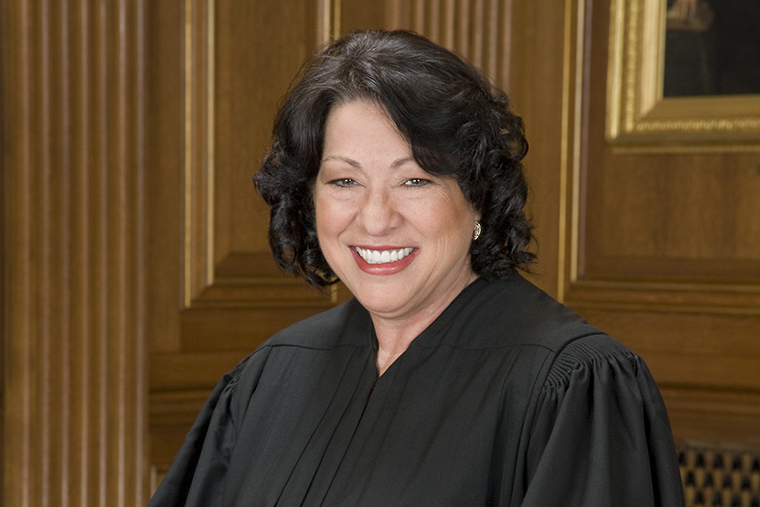
She thereafter served as an assistant district attorney in the New York County District Attorney’s Office from 1979–1984. She then litigated international commercial matters in New York City at Pavia & Harcourt, where she was an associate and then partner from 1984–1992. Sotomayor served on multiple New York City boards that included affordable housing for low-income homeowners, civil rights issues, and public funding for political candidates.
In 1991, President George H.W. Bush nominated her to the U.S. District Court, Southern District of New York. Between 1992 and 1998, she presided over roughly 450 cases at the U.S. District Court.
In 1997, she was nominated by President Bill Clinton to the U.S. Court of Appeals for the Second Circuit, where she served from 1998–2009. While serving as a federal judge, she lectured at Columbia Law School and was an adjunct professor at New York University Law School.
The first case she heard after assuming the role of associate justice of the Supreme Court was Citizens United v. Federal Election Commission, where she dissented from the majority, which held in favor of the rights of corporations in campaign finance.
During her time on the Supreme Court, Sotomayor has become known for her concerns for the rights of defendants; dissenting on issues of race, ethnicity and gender; and calls for criminal justice reform.
Andy Taylor joined Enterprise Holdings Inc., the privately held business founded in 1957 by his father, Jack Taylor, at the age of 16. He began his career by washing cars during summer and holiday vacations and learning the business from the ground up.
Enterprise Holdings owns the Enterprise Rent-A-Car, Alamo Rent A Car and National Car Rental brands, which include nearly 10,000 neighborhood and airport locations. The company has franchisee locations in more than 90 countries and territories. Enterprise Holdings is the largest car rental company in the world and the only investment-grade company in the U.S. car rental industry.
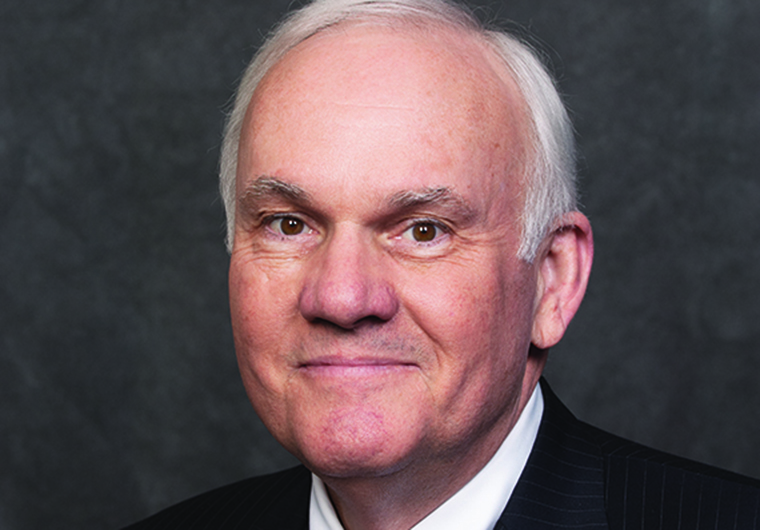
After earning his bachelor of science degree in business administration from the University of Denver in 1970, Taylor opted to gain some initial experience outside of the family business and began working for RLM Leasing, a Ford Motor Co. affiliate in San Francisco.
He returned to Enterprise three years later. Enterprise had a fleet of 5,000 cars. In 1976, he became the general manager of Enterprise Rent-A-Car’s St. Louis regional operations, was promoted to president and chief operating officer in 1980, chief executive officer in 1991, chairman in 2001 and executive chairman in 2013.
Andy and his wife, Barbara Taylor, are generous supporters of Washington University and other St. Louis institutions. In 2017, they gave $10 million to establish the Taylor Family Scholarship Challenge, which lifted Washington University’s Leading Together campaign’s total for scholarships above $500 million, a record amount.
Altogether, the Taylor family and Enterprise Holdings have given $70 million for the Enterprise Holdings Scholars program, which is the university’s largest scholarship fund.
Last month, the Taylor Geospatial Institute was launched in St. Louis. The institute brings together eight leading Midwest research institutions, including Washington University, to collaborate on research into geospatial technology. Taylor, who provided funding through a legacy investment, said, “It is my hope that this institute will cement St. Louis as the world’s true center for geospatial excellence.”
Barbara Taylor’s commitments to the St. Louis community include her long involvement with the Saint Louis Art Museum, for which she is an honorary trustee. She has served as the museum’s Friends Board president, a museum trustee and vice president and president of the art museum’s Board of Commissioners — a position appointed by the St. Louis County executive.

The first woman to hold the president’s office, she played a key role in the museum’s expansion, culminating in the opening of the new East Building in 2013.
Barbara Taylor serves on the board and executive committee of Forest Park Forever and has served as a trustee for Webster University, Mary Institute and Saint Louis Country Day School, the Junior League of St. Louis and the St. Louis Children’s Hospital Friends Board.
Barbara and her husband, Andy Taylor, have provided leadership and support to a broad range of St. Louis institutions. In addition to helping fund scholarships, Barbara and Andy Taylor and the Crawford Taylor Foundation committed $20 million to the Department of Psychiatry at Washington University School of Medicine in 2012 to fund the Taylor Family Institute for Innovative Psychiatric Research. In 2019, the Taylors committed an additional $10 million to the Taylor Family Institute, which is designed to advance the science underlying the diagnosis and treatment of psychiatric illnesses.
In 2016, Andy and Barbara Taylor gave $21 million to the Saint Louis Art Museum to endow the museum’s directorship, which is named for Barbara. They previously provided $15 million for a new wing and sculpture garden at the museum.
In 2009, the Taylors received the Jane and Whitney Harris St. Louis Community Service Award, which is given annually to a couple dedicated to improving the St. Louis region through service, generosity and leadership. In 2018, the Taylors were recognized with Washington University’s Robert S. Brookings Award for their dedication to the university.
